Power Consumption
The redundant power supplies in the server are 800W units. These are 80Plus Platinum rated units. At this point, most power supplies we see in this class of server are 80Plus Platinum rated. Almost none are 80Plus Gold at this point and a few are now Titanium rated.
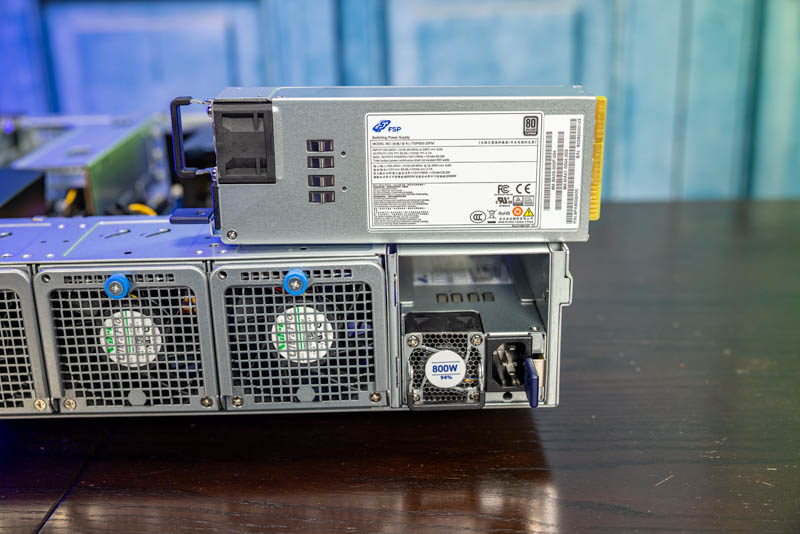
Here is what we saw paired with the Xeon Gold 6226R (similar to the Gold 6208U):
- Idle: 0.12kW
- STH 70% CPU Load: 0.21kW
- 100% Load: 0.23kW
- Maximum Recorded: 0.26kW
This gives us plenty of room to add higher power CPUs, GPUs, and NICs while still staying well below 800W for either PSU.
Note these results were taken using a 208V Schneider Electric / APC PDU at 17.3C and 72% RH. Our testing window shown here had a +/- 0.2C and +/- 1.5% RH variance. Note, we are using the same metered-by-outlet PDUs that we calibrated with our other 208V data center PDUs to give consistent results.
STH Server Spider: Gigabyte E251-U70
In the second half of 2018, we introduced the STH Server Spider as a quick reference to where a server system’s aptitude lies. Our goal is to start giving a quick visual depiction of the types of parameters that a server is targeted at.
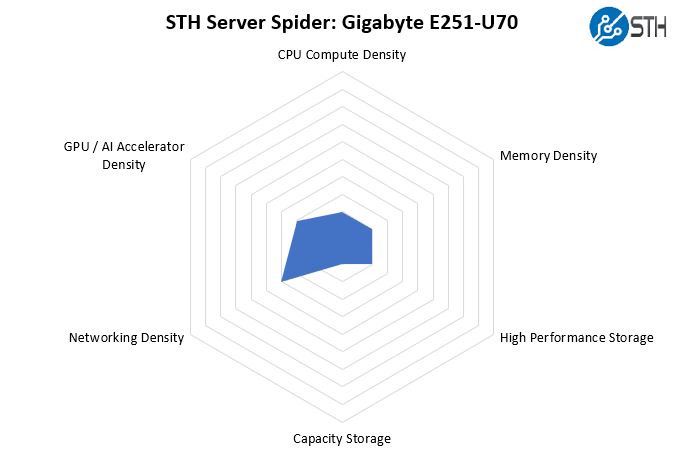
As we can see, this is not the densest platform per rack unit. That is what is expected here as this system is designed for lower power density and a short form factor for the vRAN market. One could argue that moving to all low-profile cards would allow more GPUs/ NICs to be used, but that is not the point of having a platform where a full-height dual-slot GPU and a NIC can share a PCIe switch in this short of a chassis.
Final Words
The Gigabyte E251-U70 is an intriguing server. For years on STH, many readers have openly asked for front I/O 2U servers that have room for more expansion while being short-depth. It has taken some time, but the 5G buildout along with the expansion of edge inferencing markets means that we have a new product segment with these machines today. One has to remember the context that this server is only 449mm or 17.7 inches deep.
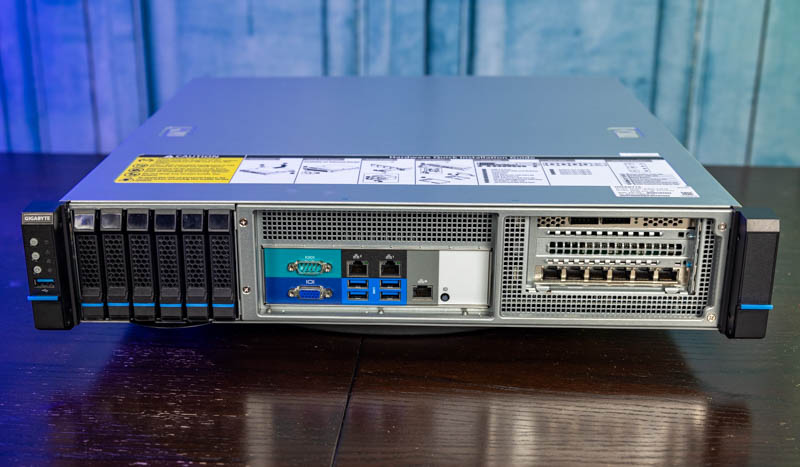
The single-socket Intel Xeon platform is firmly in the category of “mature technology” which is what many deploying edge boxes like this want. Often supporting huge core counts and memory/ storage footprints are simply less important than form factor and power consumption. There is something nice about the prospect of using a platform that will just work.
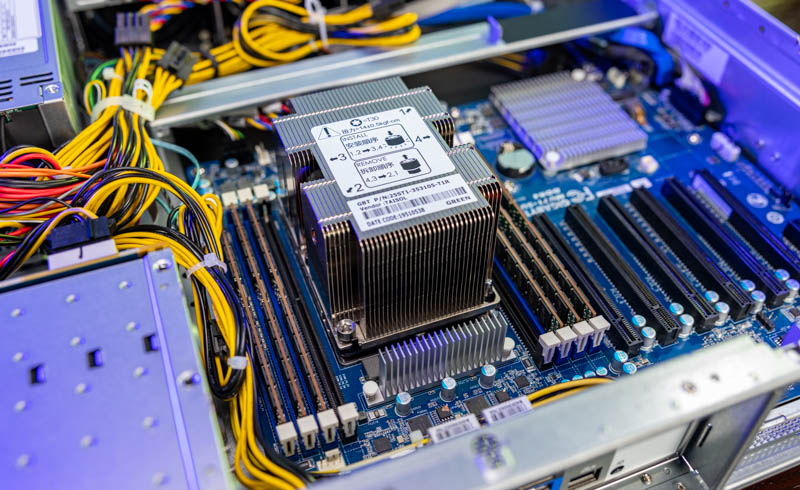
The PCIe expansion situation was clearly meant for higher-power GPUs and NICs, but it also works with lower-power units. Still, we wish that Gigabyte managed to find a way to make something like dual serviceable M.2 slots in the extra PCIe slot instead of just on the motherboard. The system itself was very easy to work on, but that would have made using M.2 for storage more attractive.
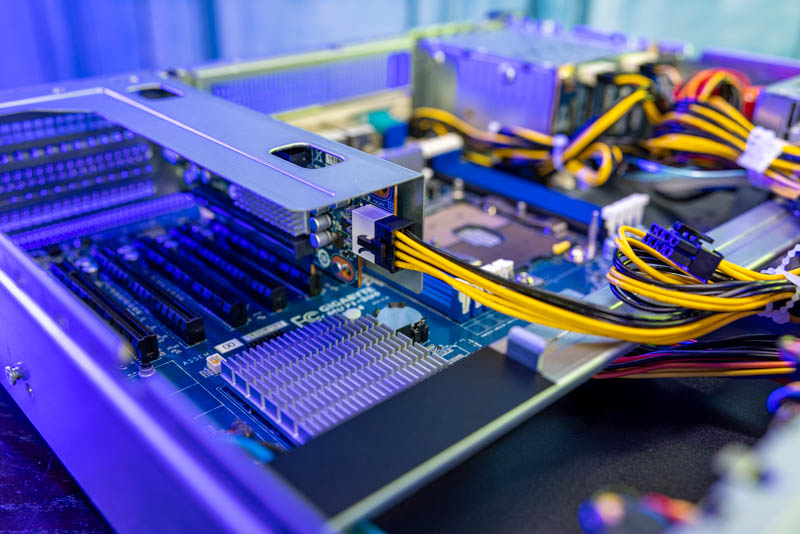
Perhaps our biggest point of feedback is that Gigabyte needs to standardize on not just having service tags on its servers, which this one had, but then also putting the unique password information on that service tag. Had we not had a photo of the box with the unique password, it would have been a bad experience. Luckily, this is an extraordinarily easy to fix area of feedback, but it must happen.
Overall, this is a neat little box and is great to check out since this is the basis for the NVIDIA Ariel 5G vRAN platform. It feels purpose-built for that type of application which is a growing area in the industry.




The combination of a powered riser card with PCIe switch, rather than a passive riser using some higher-density proprietary edge connector, and a bunch of fully populated but mechanically unusable PCIe slots interests me. I definitely wouldn’t expect to see an active PCIe switch dragged in to a cost-optimized design that isn’t starved for CPU-provided lanes; and when pennies really need to be pinched even having the connectors populated isn’t a given.
Do you know if this system just shares a motherboard with one or more other Gigabyte units that require all the slots and it was cheaper to avoid SKU proliferation than it was to cut the redundant headers; or if there is a variant of the riser card module that just provides a bunch of half-height slots? The one slot closest to the RAM looks like it’s blocked by non-removable chassis metal; but the rest of them certainly look like they could be configured as half-height slots with an appropriate rear plate slotted in.
Who is this “one” I keep seeing in all STH articles? Neo?